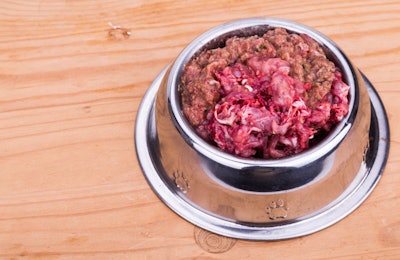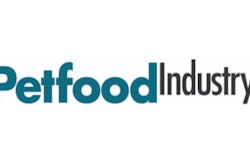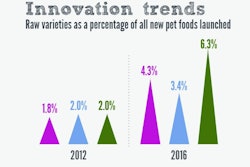
From Petfood Industry:
Although some veterinarians and others have expressed concerns over safety, raw pet food continues to grow in market share. Indeed, raw pet food is positioned for continued market growth, thanks to consumers’ increasing demands for dog and cat foods with no preservatives, processing or extraneous ingredients, according to Maria Lange, business group director for market research firm GfK, at Petfood Forum 2017.
Raw pieces of meat inherently contain no fillers, preservatives, gums, thickeners or other pet food ingredients that a growing number of customers avoid, she said. Plus, raw pet foods tend to be high in protein and nutrient rich, thus meeting the criteria of other pet food trends.
Raw pet food sales have already grown from US$117 million to US$393 million between 2012 and 2016 in the United States.
Past growth of raw pet food sales
Earlier data, released in 2014 by GfK, detailed how freeze-dried products saw 74% growth since the first quarter of 2012. This increase beats out even the next most popular premium niche, grain-free, which grew 64% in the same timeframe.
Refrigerated pet food diets brought in US$92 million to the pet food industry in 2013 (compared to just US$34 million in 2011, according to GfK). Within that segment, bagged food accounted for 47.9% of sales in 2013, while chubs and food rolls accounted for another 43.4% of sales.
Past raw pet food controversy
In June 2014, Colorado State University veterinarians came out against feeding pets raw diets, citing increased risks for contamination and the dangers of nutritionally imbalanced diets. The next month, the US Food and Drug Administration (FDA) presented warnings of its own, highlighting the possibility for food poisoning in both pets and their owners.
On the other hand, proponents of the raw pet food diet say that pets would thrive on a biologically appropriate diet, based on what they ate before they became domesticated (e.g., raw, meaty bones and vegetable scraps).
Raw pet food safety
Raw pet foods also tend to be minimally processed to pasteurize the packaged foods, but not cook them. High pressure processing allows raw pet food manufacturers to do just that, although it isn’t as scientifically established as cooking to kill pathogens. Scientists have also demonstrated that viruses, called bacteriophages or phages, can knock down Salmonella levels in raw pet food ingredients. Plus, the phages are safe for dogs and cats to eat.
















